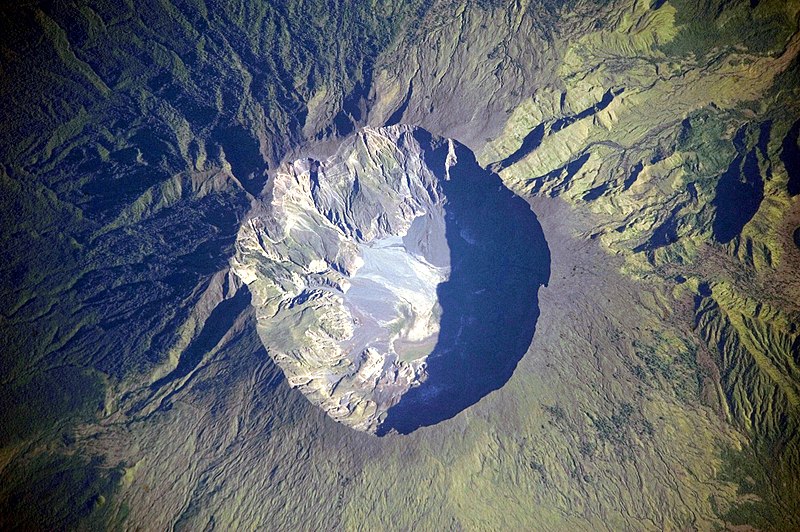Soubor:Mount Tambora Volcano, Sumbawa Island, Indonesia.jpg

Velikost tohoto náhledu: 800 × 532 pixelů. Jiná rozlišení: 320 × 213 pixelů | 640 × 425 pixelů | 1 024 × 680 pixelů | 1 280 × 851 pixelů | 2 560 × 1 701 pixelů | 4 256 × 2 828 pixelů.
Původní soubor (4 256 × 2 828 pixelů, velikost souboru: 2,29 MB, MIME typ: image/jpeg)
Historie souboru
Kliknutím na datum a čas se zobrazí tehdejší verze souboru.
| Datum a čas | Náhled | Rozměry | Uživatel | Komentář | |
|---|---|---|---|---|---|
| současná | 24. 2. 2011, 14:55 |  | 4 256 × 2 828 (2,29 MB) | Originalwana | higher res |
| 15. 4. 2010, 19:37 |  | 1 440 × 960 (619 KB) | Rosenzweig | Reverted to version as of 11:04, 19 July 2009. Back to Commons version. | |
| 15. 4. 2010, 19:37 |  | 1 440 × 960 (459 KB) | Rosenzweig | different version from de.wp | |
| 19. 7. 2009, 13:04 |  | 1 440 × 960 (619 KB) | Originalwana | {{Information |Description={{en|1=This detailed astronaut photograph depicts the summit caldera of the volcano. The huge caldera—6 kilometres in diameter and 1,100 meters deep—formed when Tambora’s estimated 4,000-meter-high peak was removed, and th |
Využití souboru
Tento soubor používá následujících 5 stránek:
Globální využití souboru
Tento soubor využívají následující wiki:
- Využití na af.wikipedia.org
- Využití na ar.wikipedia.org
- Využití na ast.wikipedia.org
- Využití na ban.wikipedia.org
- Využití na be.wikipedia.org
- Využití na bn.wikipedia.org
- Využití na ca.wikipedia.org
- Využití na da.wikipedia.org
- Využití na de.wikipedia.org
- Využití na en.wikipedia.org
- Využití na en.wikiversity.org
- Využití na en.wikivoyage.org
- Využití na eo.wikipedia.org
- Využití na es.wikipedia.org
- Využití na fa.wikipedia.org
- Využití na fr.wikipedia.org
- Využití na fr.wiktionary.org
- Využití na gl.wikipedia.org
- Využití na gor.wikipedia.org
- Využití na he.wikipedia.org
- Využití na hr.wikipedia.org
- Využití na id.wikipedia.org
- Gunung Tambora
- Wikipedia:Hari ini dalam sejarah/April
- Wikipedia:Gambar pilihan/2011
- Wikipedia:Gambar pilihan/Usulan/2011/54 Intro
- Wikipedia:Gambar pilihan/54 2011
- Templat:Hari Ini Dalam Sejarah/April
- Wikipedia:Gambar pilihan/Tempat/Landskap
- Wikipedia:Arsip halaman utama/2023/04/10
- Wikipedia:Arsip halaman utama/2024/04/10
- Využití na it.wikipedia.org
- Využití na ja.wikipedia.org
- Využití na ka.wikipedia.org
- Využití na kk.wikipedia.org
- Využití na mk.wikipedia.org
- Využití na ro.wikipedia.org
- Využití na ru.wikipedia.org
Zobrazit další globální využití tohoto souboru.



